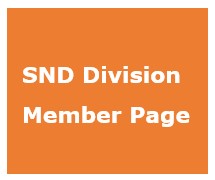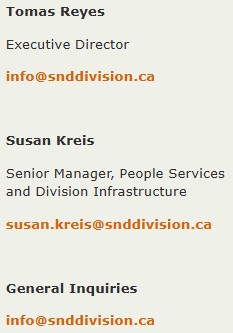In conversation with Dr. Lawrence Yang and Dr. Sujatha Nilavar
Have you ever felt disillusioned? Frustrated with limitations in the healthcare system that prevent you from caring for your patients in the way you’d like? Perhaps these feelings have led to job dissatisfaction, or heightened stress at home or at work.
If so, then you have probably experienced moral distress — a state brought on by an accumulation of situations where a physician is unable to meet their own, often high, expectations for patient care. In fact, Dr. Lawrence Yang, a founding member of the SND Division’s Physician Wellness Committee, believes that every family physician has experienced moral distress, and is at risk of experiencing its more destructive counterparts: moral injury and burnout.
Increasingly isolating pressures in family medicine, combined with system-wide issues that create no-win situations for physicians and impact patient care all contribute to this widespread health challenge.
Here, Dr. Yang and Dr. Sujatha Nilavar, a Committee co-chair, discuss how to identify moral distress, moral injury and burnout in ourselves and our colleagues, and methods of coping with and preventing these difficult conditions.
Moral Distress, Moral Injury and Burnout: What are they?
Moral distress, moral injury and burnout are perhaps best visualized as three points on a spectrum, with moral distress existing at one end, and burnout at the other.
As physicians, we have certain expectations of ourselves — that we will be able to diagnose and treat a patient effectively, and that our treatment will lead to the best possible outcome for our patients.
But as we progress in our careers, the realities we encounter are often quite different from the expectations we have. We are continually met with obstacles to achieving our desired outcomes:
-
we cannot afford the human resources necessary to create and leverage awareness of up-to-date community resources
-
our patients are unable to access the services they need
-
our referrals go unanswered or waitlists are unacceptably long
-
personal, financial or community roadblocks prevent patients from performing the necessary self-care to manage their conditions (ie: social determinants of health)
As a result, we watch our patients get sicker, rather than better. As these experiences accumulate, the resulting frustration and disillusionment we feel can be called moral distress.
Moral injury, the next point on the spectrum, is similar to the PTSD soldiers experience when returning from a conflict zone. First responders, police officers and firefighters are also susceptible to moral injury.
As a physician, you might find yourself in a no-win clinical therapeutic conundrum:
-
where the only available treatment path might still cause harm
-
where a patient is high-risk, but you proceed with treatment because there is no other option
-
where a prescription to treat the greatest problem exacerbates another condition
In these cases, when the outcome is bad — the patient experiences harm, or dies — physicians often blame themselves, and can experience a great deal of guilt and shame. Events like these, and the resulting self-blame, are what lead to moral injury.
Burnout, the final point on the spectrum, results when moral distress and moral injury accumulate and reach a tipping point where they overwhelm a physician’s coping mechanisms. An environment where there are multiple, layered, systemic barriers to doing good work is an ideal breeding ground for burnout.
Am I Burning Out, or Just Having a Bad Day?
While moral distress, moral injury and burnout are widespread among physicians, many of us do not recognize that we are suffering. Because we are trained to be resilient and selfless, because we see ourselves as caregivers, rather than care-receivers, and because we don’t want to appear to be weak to ourselves or our colleagues, we often dismiss these destructive conditions as something we need to “get over”.
But the symptoms of burnout are much more severe than a feeling of stress at the beginning of a long week. If you are experiencing any of the following symptoms, you might be on the moral distress-burnout spectrum:
-
Feeling hopeless
-
Feeling uninterested in work - performing work tasks feels menial, repetitive, and possibly pointless
-
Feeling worthless, guilty or ashamed
-
Ruminating about clinical cases
-
Experiencing stress-related conflict in relationships outside of work (for example, being short-tempered with children or spouse)
-
A decreased ability to provide care at previous capacity
-
MOAs and patients have begun to notice
How to Manage Burnout: A Primer
As with most health challenges, managing burnout effectively is not simple, and requires a multi-pronged approach. Increasing the challenge for physicians is the scarcity of resources available, compared with other professions that are at high risk for burnout.
If you believe that you are experiencing burnout, or are at risk for developing it, though, don’t lose hope. There are a number of ways that you can begin to address this challenge.
1. Schedule Weekly Check-ins to Reflect On Your Energy Output
Amongst physicians, there is a culture of taking everything on oneself, being resilient in the face of difficulty and showing a brave face to the world. And because of our training and principals, there is a good chance that we will let burnout affect our home lives before we let it touch our work. In this climate, burnout is rarely discussed, and physicians are often unaware that they are even experiencing it.
For most, however, simply pushing through is not the best treatment. Creating weekly reminders to check in with yourself, and seeking feedback from trusted friends or family members might be the first steps in identifying a need for sustainable, healthy change.
2. Strategically Design a Schedule That Supports Self-Care
Part of addressing burnout is creating a better work-life balance. To the physician burdened with more paperwork than they will ever be able to complete, the notion might sound like a pipe dream. But the idea is to start small.
Dr. Nilavar, for example, takes a mental health day once every two weeks, and tells her patients she’s in a meeting. She uses this time to catch up on administrative work, and develop methods of creating a better balance.
Others areas to consider are:
-
Making changes to work hours to better support areas of value in your personal life
-
Evaluating workflow and work force for opportunities to increase efficiency. For example, analyze your list of tasks and identify three that you can gradually train your MOAs to assist you with completing -- the investment stands to pay dividends
-
Delaying your first booking time by 15 minutes, to give yourself time to plan out the day. Or, staying a little bit later in order to finish work at work (see Whack the WAC)
-
Making other small changes that increase your sense of control over your schedule
3. Share Your Stories of Burnout
Burnout is not discussed often enough, and it should be; the condition contributes to early retirement, depression, self-medication and even suicide amongst physicians. Self-care is important, but sharing our experiences can be a powerful antidote.
Many of us enter into our early careers from a supportive, team-based residency experience. But when we begin our practice as attending physicians, we are often operating alone. Gone are the days of congregating in the physician lounge at the hospital. While there are exceptions, many teams consist of only one physician and one MOA.
Because of this, developing and nurturing supportive peer networks is more necessary than ever.
Talking about burnout can be a vulnerable experience, but that doesn’t have to be a negative thing; the most effective leaders share an ability to be open and vulnerable, because it’s a quality that leads to growth.
If you are experiencing moral distress or burnout, there is a high likelihood that your peers are experiencing something similar. Reaching out to a trusted peer or mentor not only eases the burden of coping alone -- one of the greatest benefits of human connection is the potential for generating hope and with that hope, innovative adaptations to environmental challenges.
If a trusted colleague isn’t readily available, Doctors of BC offers a Crisis Line that can be accessed by calling 1-800-663-6729.
Get Involved: Join the Physician Wellness Committee
One of the best ways our system can combat burnout is to find a way to rebuild a strong sense of belonging, equity, autonomy, meaning, and safety for doctors. Our healthcare system is imperfect, and working harder, sacrificing our health in order to complete our charting, is not going to fix that. What will is connecting to each other authentically, developing our leadership strengths to shift to a safer more constructive culture, and getting to a point where we are leveraging existing resources more effectively. Have we missed opportunities to leverage our clinic teams, each other, and available strategic system redesign technologies? Dr. Yang believes that we absolutely have what we need to close the gaps that contribute to physician moral distress, moral injury, and ultimately, burnout.
When you become more involved in your Division of Family Practice, you move us closer to a system that is actually effective at sustainably facilitating healing. The Physician Wellness Committee is one physician-driven Division initiative that really needs your support.
Dr. Yang, Dr. Nilavar, Dr. Jesse Gill (founding member) and Dr. Linda Uyeda (co-chair) created the Physician Wellness Committee as a platform for physicians to connect and discuss the barriers to wellness that they face, as well as the strategies they have developed to address issues such as burnout. The committee is actively seeking members to join the team.
If you are interested in participating, please contact Dr. Yang on Whatsapp at 778-877-4283.
The conversation about physician burnout and what we can do about it is long overdue, and we are excited to be spearheading this important dialogue.



